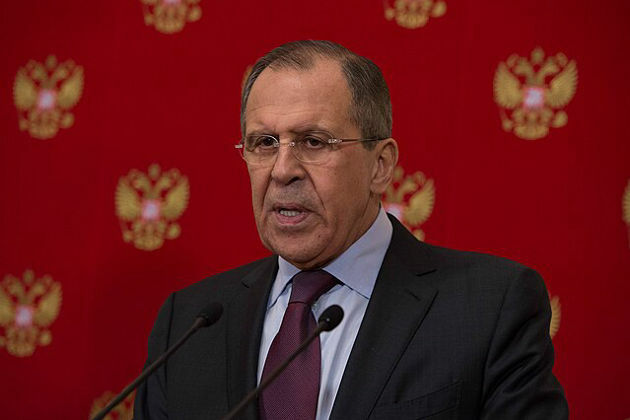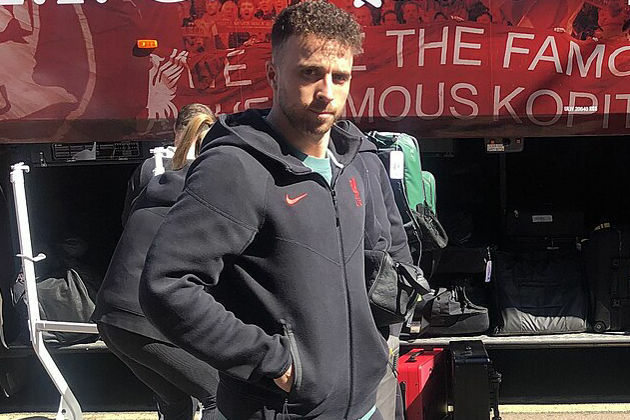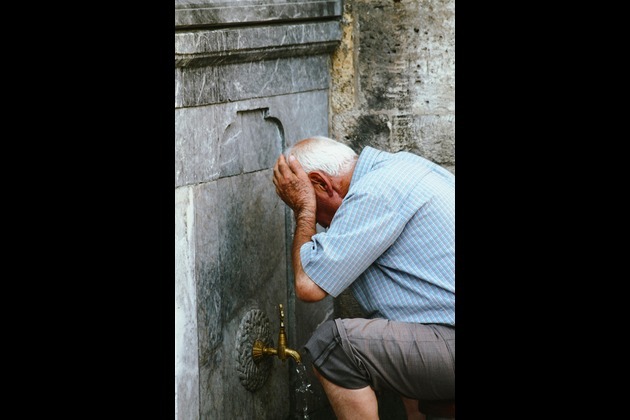Master the Key Points of Sowing in Winter, Celebrate the Harvest in Spring and Summer
Merxwire
29 Jan 2023, 14:52 GMT+10
Spring is coming, it's time to arrange your home garden in winter. Learn the secrets of winter indoor sowing, including choosing plant species, planting location, soil substrate, and container to use. You can celebrate the harvest in spring and summer and enjoy the natural beauty.

Taipei, TAIWAN (Merxwire) - As spring gets closer, it's time to lay out your home garden. If you want a beautiful garden in spring and summer, you have to learn how to plant seeds indoors starting in winter. The essentials of indoor sowing include plant species, planting location, sowing depth, the container used, etc. If you prepare in advance, you can have beautiful natural scenery in summer.
The reason we have to sow seeds indoors in winter is that the indoor space can provide a comfortable germination environment for plants, allowing them to grow better and faster than sowing outdoors. When the plant growing season is reached, it can be moved to the outside to continue growing. The plant will be more stable and mature, and the growing period will be saved. The harvest period will also be lengthened.
Buying a package of seeds is more economical than buying a pot of plants. A pack of seeds allows you to sow at least 2 to 3 times or more, and you could observe the process of plant growth. There are no restrictions on plant types because usually potted plants are limited to certain commercially considered varieties. In contrast, there are more types of seed selection.
The purpose of sowing seeds indoors in winter is to create a good germination environment for the plants and to construct better growth conditions. Let them have better growth and appearance when they move outdoors in the future. Although the conditions required for the growth of each plant are not the same mastering the following 8 essentials can help plants lay a good foundation for future growth.
Choose a warm and undisturbed location
Because the seedlings need at least 6 to 8 hours of light per day, you need to find a bright and warm corner indoors, and a place that will not be disturbed by children or pets. Plant lights can be appropriately increased to allow sufficient sunlight time and maintain suitable humidity.

(Photo via pexels.com)
Select suitable plants and schedule planting
Because not all seeds are suitable for growing indoors, such as carrots and white radishes. So choosing the right plants is extremely important. Tomatoes, peppers, dill, or basil are all suitable for indoor sowing. Remember not to have too many species, and at the same time, arrange the sowing plan according to the growth rate of the plants, to successfully pick up the season of moving outdoors.
Choose the right soil and substrate
Choosing the right soil and adding the substrate can give the plants the nutrients they need when they germinate. For example, consider whether the soil should be acidic or alkaline, and what kind of substrate should be mixed, such as sand, peat moss, perlite, or other suitable mixtures. Also pay attention to the fluffiness of the soil, too light may make it easier for fungi to grow, and too heavy will compress the growth space of the roots.
Choose the right size and shape container for planting
For smaller plants, multi-format seed trays can be used. If it is a larger vegetable and fruit, you can use a larger square seedling pot. You can use discarded or environmentally friendly containers, such as egg cartons, pudding boxes, or compostable paper cups. No matter what kind of container you use, remember to dig drainage holes in the bottom and match it with a shallow pan that can catch water.
Precautions for Preparing Seeds
When buying seeds, remember to choose sterile seeds that do not contain pathogen spores, which can avoid various problems during planting. Read the package directions before planting to check if any pre-treatment is required, such as soaking in warm water first. For seeds that have been placed for a long time or older, you can take a few and put them on a wet paper towel, place them in a sealed box or a cool place, and observe for a week to see the overall signs of germination.
Notice the sowing depth and sufficient moisture
Some seeds require sufficient depth and soil to provide more nutrients and some need light to germinate, such as snapdragons and wrapper lettuce. Remember to understand the characteristics of the plant before sowing and to let the soil maintain a certain humidity before planting. Then add water frequently and gently to maintain soil moisture. Do not add too much water to avoid producing bacteria or spoiling the seedlings.

(Photo via pexels.com)
Create a Greenhouse Environment Indoors
Create an indoor greenhouse with some simple tips to make it easier for plants to germinate and grow. For example, put a plastic cover to concentrate water and heat near the seeds, wait until the bud height is close to the cover, and then remove the cover. Combined with a heated germination mat, it can also increase and maintain the temperature of the pot bottom and the air. Try to place potted plants on top of the refrigerator to help raise the temperature and add heat.
Properly replace the container and train the plant
Appropriate fertilization during the process to help the plants grow, but it is recommended to stop fertilizing one week before moving outdoors to maintain plant firmness. If the plants need a larger growth space you could replace them with larger containers. If there are too many seedlings in the same pot, you can separate them to increase the growth space. In the first two weeks of moving, you can start placing them in a safer corner outside the house to train the plants. It can be slowly moved from a shady place to a light place, and the daily storage time can be gradually increased from one hour.
Then comes the important migration process. Slowly move plants outside according to your planting plan. At this stage, patience is the most important key. Carefully grasp the growth conditions of plants and the time when they are suitable for moving outdoors. If the weather is not good, the resettlement date can be postponed. Research what to do with the roots of the plants beforehand, as some may be suitable for splitting and growing in different directions. Some roots may not be touched to avoid affecting the normal growth of plants.
After moving outdoors, according to the weather conditions, properly set up some protective measures, so that the plants can have enough time to adapt to the new environment. Remember the above key points to let the plants start to germinate well in winter, and have an unexpected harvest in summer.
 Share
Share
 Tweet
Tweet
 Share
Share
 Flip
Flip
 Email
Email
Watch latest videos
Subscribe and Follow
Get a daily dose of New York Statesman news through our daily email, its complimentary and keeps you fully up to date with world and business news as well.
News RELEASES
Publish news of your business, community or sports group, personnel appointments, major event and more by submitting a news release to New York Statesman.
More InformationBusiness
SectionUS debt limit raised, but spending bill fuels fiscal concerns
NEW YORK CITY, New York: With just weeks to spare before a potential government default, U.S. lawmakers passed a sweeping tax and spending...
Shein hit with 40 million euro fine in France over deceptive discounts
PARIS, France: Fast-fashion giant Shein has been fined 40 million euros by France's antitrust authority over deceptive discount practices...
Meta hires SSI CEO Gross as AI race intensifies among tech giants
PALO ALTO/TEL AVIV: The battle for top AI talent has claimed another high-profile casualty—this time at Safe Superintelligence (SSI),...
Engine defect prompts Nissan to recall over 443,000 vehicles
FRANKLIN, Tennessee: Hundreds of thousands of Nissan and Infiniti vehicles are being recalled across the United States due to a potential...
Microsoft trims jobs to manage soaring AI infrastructure costs
REDMOND, Washington: Microsoft is the latest tech giant to announce significant job cuts, as the financial strain of building next-generation...
Stocks worldwide struggle to make ground Friday with Wall Street closed
LONDON UK - U.S. stock markets were closed on Friday for Independence Day. Global Forex Markets Wrap Up Friday with Greeback Comeback...
International
SectionMoscow removes Taliban from banned list, grants official status
MOSCOW, Russia: This week, Russia became the first country to officially recognize the Taliban as the government of Afghanistan since...
Netanyahu vows 'No Hamas' in postwar Gaza amid peace talks
CAIRO, Egypt: This week, both Hamas and Israel shared their views ahead of expected peace talks about a new U.S.-backed ceasefire plan....
US sends message by publicizing visa ban on UK punk-rap band
WASHINGTON, D.C.: The Trump administration has made public a visa decision that would usually be kept private. It did this to send...
Tragedy in Spain: Diogo Jota and his brother die in car accident
MADRID, Spain: Liverpool footballer Diogo Jota and his younger brother, André Silva, have died in a car accident in Spain. Spanish...
Early heatwave grips Europe, leaving 8 dead and nations on alert
LONDON, U.K.: An unrelenting heatwave sweeping across Europe has pushed early summer temperatures to historic highs, triggering deadly...
U.S. military, China, Russia in Space race
President Donald Trump's plans to build a space-based Golden Dome missile defense shield have drawn immediate criticism from China,...













